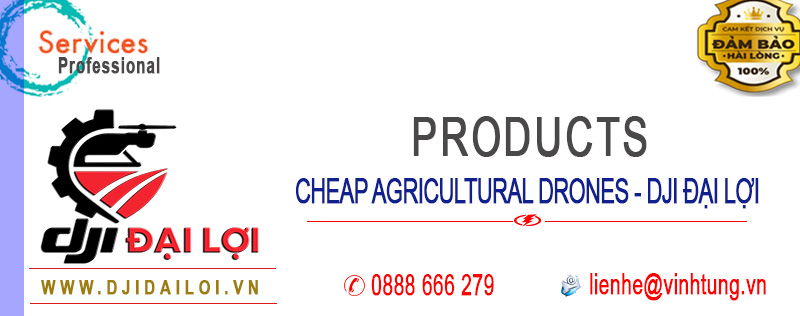
A spraying drone is an unmanned aerial vehicle (UAV) programmed to spray pesticides, fertilizers, or plant protection products. Operating autonomously or semi-autonomously, these drones reduce treatment time over large areas and minimize human exposure to harmful chemicals.
Today, agricultural drones are widely used on rice fields, fruit farms, and vegetable plots across Vietnam thanks to their cost-saving and labor-efficiency benefits.
Compared to traditional methods, spraying drones offer significant advantages:
This makes them a smart agriculture solution embraced by many cooperatives and large farms.
Even if you run a small farm, investing in a crop-spraying drone may still be worth it if:
In such cases, affordable spraying drones or domestic UAV models are ideal for reducing initial investment costs.
Spraying drones are generally classified by tank volume:
Notable spraying drone brands in Vietnam:
|
Feature |
4-Rotor Drone |
6-Rotor Drone |
|---|---|---|
|
Stability |
Moderate |
Higher, less vibration |
|
Lifting power |
Lower |
Suitable for larger tanks |
|
Price |
Cheaper |
More expensive |
|
Terrain suitability |
Flat land |
Ideal for hilly/windy areas |
6-rotor drones are recommended for rugged terrain or high-performance needs.
Recommended:
Needs dome-spray capability and flexible altitude control:
Recommended compact and easy-to-fly drones:
Affordable crop-spraying drones fall into several tiers:
Choose based on your field size and intended usage.
Spraying drone prices vary depending on:
|
Criteria |
DJI Agras T20P |
XAG P100 |
|---|---|---|
|
Price Range |
~160–180M VND |
~210–240M VND |
|
Tank Capacity |
20L |
25L |
|
3D Mapping |
Yes |
Yes |
|
Radar System |
360° coverage |
AI precision programming |
|
Maintenance Cost |
Moderate |
Higher |
For better budget control, DJI T20P is more economical. For high-tech precision, XAG P100 stands out.
The DJI Agras T50 is a high-tech drone built for large-scale farms of 10 hectares or more. It can carry 40 kg for spraying and 50 kg for spreading, delivering outstanding productivity and efficiency.
With a spray rate of 16 L/min (2 nozzles) or 24 L/min (4 nozzles), it can cover up to 21 hectares/hour-ideal for monoculture farms and cooperatives.
Standout features include Active Phased Array Radar, dual vision sensors, and a high-power motor, enabling precise operations even on steep, windy terrain. Its dual-twist frame, FPV camera, and remote control ensure easy operation at long distances.
In summary, the T50 is the top choice for professionals seeking speed, accuracy, and high output in large-scale spraying.
Top reasons:
Looking for ultra-accurate, smart spraying? XAG P100 is your best bet. Designed for high-tech farms, it sprays by pixel and auto-calculates dosage per zone.
Key features:
Perfect for large farms and tech-driven agri-businesses.
Vietnamese drones like AgriDrone or VietDrone are widely chosen for their affordability. Costing under 100 million VND, they're easy to maintain with accessible spare parts and local support.
Benefits:
Due to heavy loads, drone batteries drain fast. Equip 2–4 spare batteries and a high-capacity mobile charging station. Some models charge fully in 15–20 minutes, enabling nonstop operation.
Remote controls help program routes, adjust dosage, and track altitude/speed. Advanced models include touchscreens and 3D maps for precise spraying in complex terrains.
Specialized nozzles allow different spray forms (mist, large drops, cone). Combined with chemical filters, they prevent clogging and extend system lifespan.
To ensure genuine products:
Always buy from authorized dealers to avoid fake or poor-quality drones.
Recommended sources:
Check after-sales service, training, and maintenance policies before purchasing.
Avoid these pitfalls:
These missteps often lead to higher repair costs or product underuse.
For first-time users:
|
Task |
Frequency |
|---|---|
|
Clean propellers |
After each use |
|
Check batteries |
Weekly |
|
Motor maintenance |
Monthly |
|
Software updates |
As released |
Investing in an affordable agricultural spraying drone is a strategic step toward smart, cost-effective, and productive farming. Whether your farm is large or small, choosing the right drone and accessories can help cut operational costs, increase yields, and give you more control over crop management.